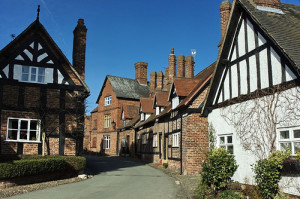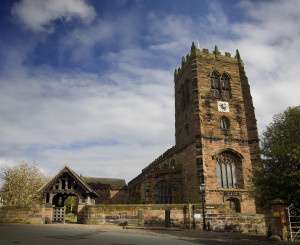About Great Budworth
Great Budworth is located about 4 miles north of Northwich and seven miles west of Knutsford. It is a village (with a population of just over 300) and is also the name of the parish. The name Great Budworth comes from the Old Saxon words bode (‘dwelling’) and wurth (‘a place by water’) – the water in question being both Pickworth Mere to the east and Budworth Mere to the west, the latter being the home of Great Budworth Sailing Club.
History Of Great Budworth
The early history of Great Budworth is documented in the Domesday Book. There may have been a school in Great Budworth as early as 1563, but certainly one existed by 1578. For centuries, the village was owned by the head of Arley Hall, who would collect rent from the villagers. Rent collection would take place in what is now The Old Hall, in the High Street.
Rowland Egerton-Warburton, of Arley Hall, paid for restoration and improvements to the church in the 1850s and also undertook a ‘campaign to render it picturesque in Victorian eyes’. To that end he commissioned architects such as John Douglas to work on buildings in the village. Douglas remodeled the George and Dragon pub in 1875 and restored some of the cottages, most notably Goldmine House, Dean Cottages and several properties in the High Street, including the George and Dragon pub.
A running pump was the only source of drinking water for the whole community until 1934, when a piped supply was first connected.
Until 1948, Great Budworth was part of the Arley Hall estate.
During the reign of Henry III, Sir Geoffrey de Dutton (sometimes “Geffrey de Budworth”) (d. 1248) was lord of the manor. De Budworth was the son of Adam, a younger son of Hugh de Dutton. Peter, grandson of De Budworth and ancestor of Sir Peter Warburton, second Bart. of Arley, moved to Warburton, assumed that name, and was a proprietor of Great Budworth. De Budworth gave a third of his land, including St Mary and All Saints Church, to Norton Priory in order to secure perpetual masses for his soul. After the dissolution of the monasteries, King Henry VIII granted the estate to John Grimsditch. It was afterwards divided into several parcels.




